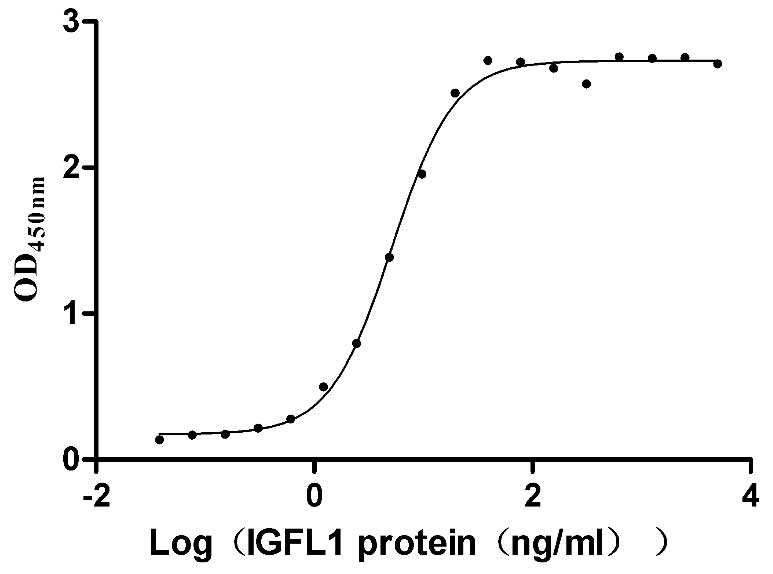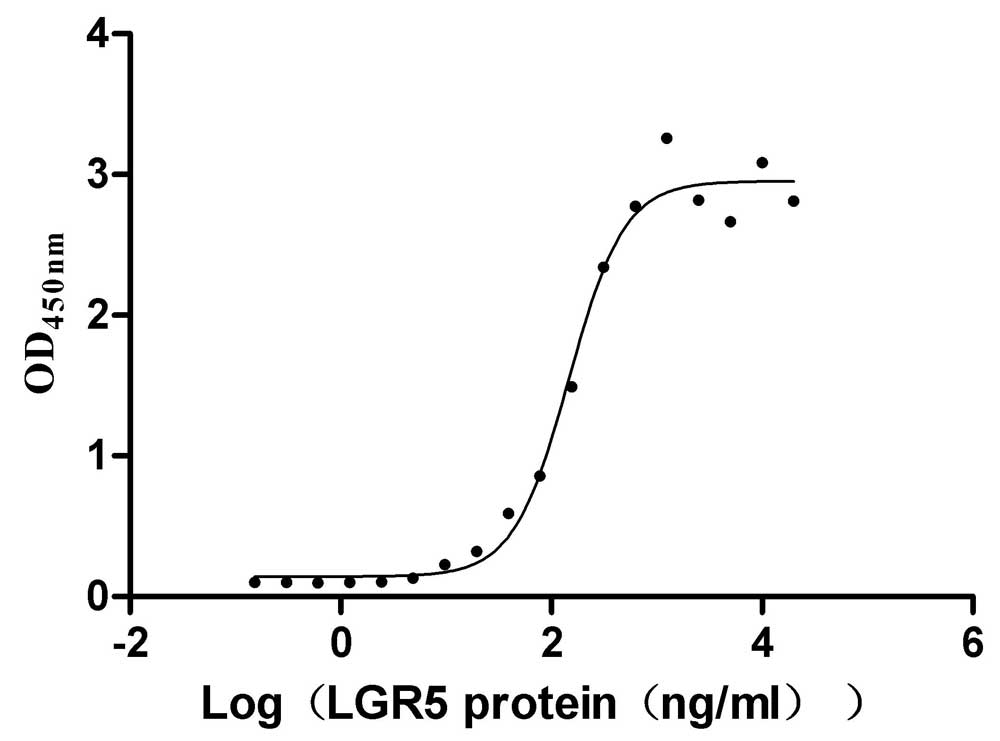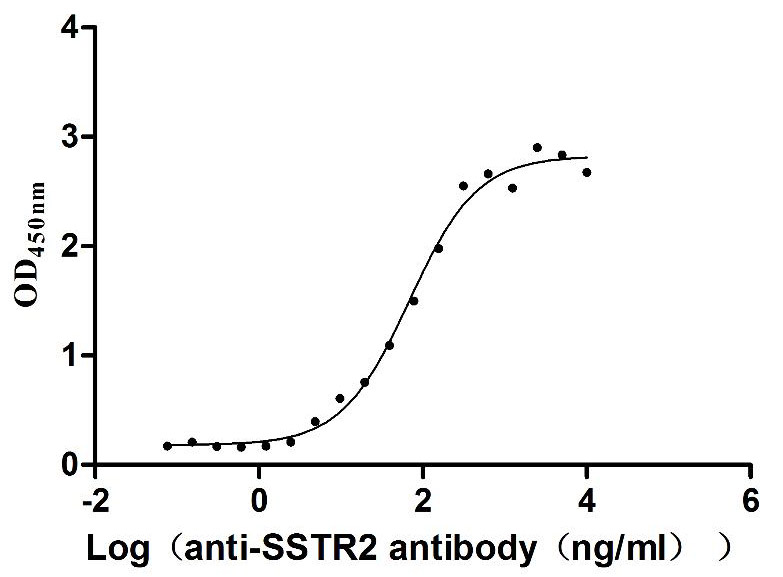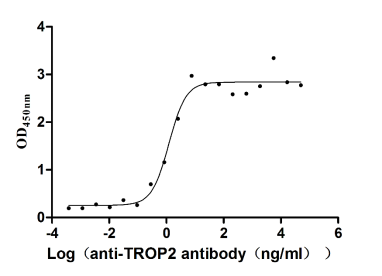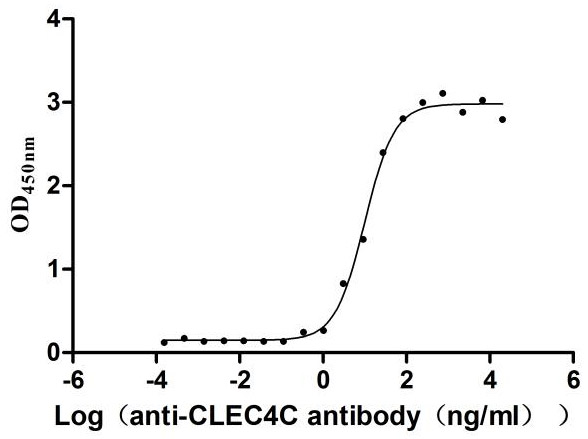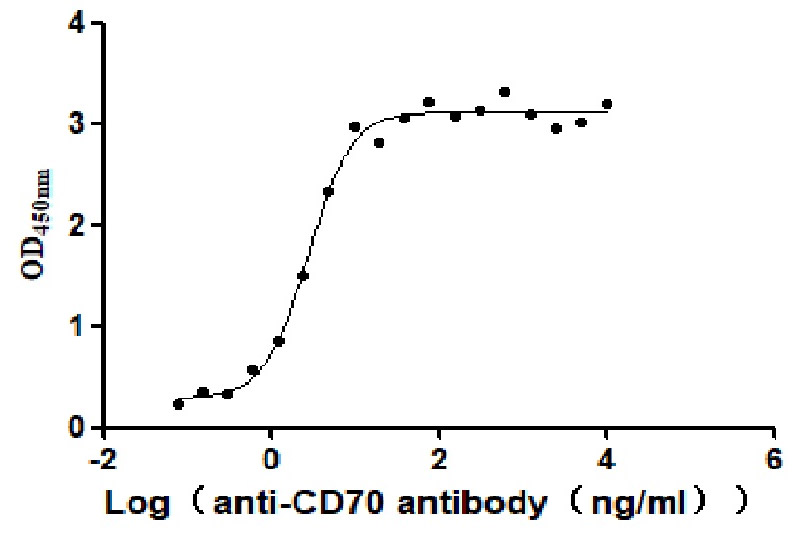Recombinant Human Elongator complex protein 1 (IKBKAP), partial
-
中文名称:人ELP1重组蛋白
-
货号:CSB-YP011571HU
-
规格:
-
来源:Yeast
-
其他:
-
中文名称:人ELP1重组蛋白
-
货号:CSB-EP011571HU
-
规格:
-
来源:E.coli
-
其他:
-
中文名称:人ELP1重组蛋白
-
货号:CSB-EP011571HU-B
-
规格:
-
来源:E.coli
-
共轭:Avi-tag Biotinylated
E. coli biotin ligase (BirA) is highly specific in covalently attaching biotin to the 15 amino acid AviTag peptide. This recombinant protein was biotinylated in vivo by AviTag-BirA technology, which method is BriA catalyzes amide linkage between the biotin and the specific lysine of the AviTag.
-
其他:
-
中文名称:人ELP1重组蛋白
-
货号:CSB-BP011571HU
-
规格:
-
来源:Baculovirus
-
其他:
-
中文名称:人ELP1重组蛋白
-
货号:CSB-MP011571HU
-
规格:
-
来源:Mammalian cell
-
其他:
产品详情
-
纯度:>85% (SDS-PAGE)
-
基因名:ELP1
-
Uniprot No.:
-
别名:DKFZp781H1425; DYS; Dysautonomia (Riley Day syndrome hereditary sensory autonomic neuropathy type III); Elongator complex protein 1; ELP 1; ELP1; ELP1_HUMAN; FD; FLJ12497; IKAP; IkappaB kinase complex associated protein; IkappaB kinase complex-associated protein; ikbkap; IKI 3; IKI3; IKK complex associated protein; IKK complex-associated protein; Inhibitor of kappa light polypeptide gene enhancer in B cells kinase complex associated protein; OTTHUMP00000063889; p150; TOT 1; TOT1
-
种属:Homo sapiens (Human)
-
蛋白长度:Partial
-
蛋白标签:Tag type will be determined during the manufacturing process.
The tag type will be determined during production process. If you have specified tag type, please tell us and we will develop the specified tag preferentially. -
产品提供形式:Lyophilized powder
Note: We will preferentially ship the format that we have in stock, however, if you have any special requirement for the format, please remark your requirement when placing the order, we will prepare according to your demand. -
复溶:We recommend that this vial be briefly centrifuged prior to opening to bring the contents to the bottom. Please reconstitute protein in deionized sterile water to a concentration of 0.1-1.0 mg/mL.We recommend to add 5-50% of glycerol (final concentration) and aliquot for long-term storage at -20℃/-80℃. Our default final concentration of glycerol is 50%. Customers could use it as reference.
-
储存条件:Store at -20°C/-80°C upon receipt, aliquoting is necessary for mutiple use. Avoid repeated freeze-thaw cycles.
-
保质期:The shelf life is related to many factors, storage state, buffer ingredients, storage temperature and the stability of the protein itself.
Generally, the shelf life of liquid form is 6 months at -20°C/-80°C. The shelf life of lyophilized form is 12 months at -20°C/-80°C. -
货期:Delivery time may differ from different purchasing way or location, please kindly consult your local distributors for specific delivery time.Note: All of our proteins are default shipped with normal blue ice packs, if you request to ship with dry ice, please communicate with us in advance and extra fees will be charged.
-
注意事项:Repeated freezing and thawing is not recommended. Store working aliquots at 4°C for up to one week.
-
Datasheet :Please contact us to get it.
相关产品
靶点详情
-
功能:Component of the RNA polymerase II elongator complex, a multiprotein complex associated with the RNA polymerase II (Pol II) holoenzyme, and which is involved in transcriptional elongation. The elongator complex catalyzes formation of carboxymethyluridine in the wobble base at position 34 in tRNAs. Involved in neurogenesis. Regulates the migration and branching of projection neurons in the developing cerebral cortex, through a process depending on alpha-tubulin acetylation. May act as a scaffold protein that may assemble active IKK-MAP3K14 complexes (IKKA, IKKB and MAP3K14/NIK).
-
基因功能参考文献:
- overexpression of miR-203a-3p leads to a decrease of NOVA1, counter-balanced by an increase of IKAP, supporting a potential interaction between NOVA1 and IKAP. PMID: 27483351
- IKAP might be a vesicular like protein that might be involved in neuronal transport in hESC derived PNS neurons PMID: 26437462
- The formation of the Elp1 dimer contributes to its stability in vitro and in vivo and is required for the assembly of human Elongator complexes. PMID: 26261306
- IKBKAP mRNA levels decreased during a familial dysautonomia crisis and returned to baseline after recovery. The cause-and-effect relationship is unclear. PMID: 24268683
- Phosphatidylserine increases IKBKAP levels in a humanized knock-in IKBKAP mouse model for Familial dysautonomia. PMID: 23515154
- Digoxin-mediated repression of SRSF3 expression plays a role in the digoxin-mediated inclusion of exon 20 in the IKBKAP transcript generated from the familial dysautonomia mutant allele. PMID: 23711097
- Combined treatment with epigallocatechin gallate and genistein synergistically upregulates wild-type IKBKAP-encoded RNA and protein levels in familial dysautonomia-derived cells. PMID: 22495984
- IKAP plays pleiotropic roles in both the peripheral and central nervous systems PMID: 22384137
- IKAP/hELP1 deficiency has an effect on gene expression in differentiating neuroblastoma cells, and possibly on familial dysautonomia PMID: 21559466
- IKK complex-associated protein deficiency upregulates the microtubule destabilizing protein SCG10 and, in parallel, disorganizes the cytoskeleton PMID: 21273291
- Phosphatidylserine increases IKBKAP levels in familial dysautonomia cells PMID: 21209961
- IKAP regulates contactin levels for appropriate cell-cell adhesion that could modulate neuronal growth of neurons during development PMID: 20671422
- IKAP is critical for the development of afferent baroreflex pathways and has therapeutic implications in the management of these patients. PMID: 21098405
- IKBKAP is a candidate gene for Hirschsprung's disease and was mapped to chromosome 9q31 locus. PMID: 20361209
- novel role for the I kappa B kinase complex-associated protein (IKAP) in the regulation of activation of the mammalian stress response via the c-Jun N-terminal kinase (JNK)-signaling pathway PMID: 12058026
- Genetics of familial dysautonomia; tissue-specific expression of a splicing mutation (REVIEW) PMID: 12102458
- Tissue-specific reduction in splicing efficiency of this protein is due to the major mutation associated with familial dysautonomia. PMID: 12577200
- The study results suggest that the polymorphisms in the coding region of the IKAP gene are unlikely to contribute to atopic disease risk in the Czech population. PMID: 12774215
- whereas IKBKAP (Elongator) is recruited to both target and nontarget genes, only target genes display histone H3 hypoacetylation and progressively lower RNAPII density through the coding region in familial dysautonomia cells PMID: 16713582
- Neurodevelopmental disease familial dysautonomia (FD)caused by a single-base change in the 5' splice site (5'ss) of intron 20 in the IKBKAP gene (c.2204+6T>C). PMID: 16964593
- investigated the nature of the FD splicing defect and the mechanism by which kinetin improves exon inclusion PMID: 17206408
- IKAP/hELP1 may play a role in oligodendrocyte differentiation and/or myelin formation. PMID: 17591626
- description of a humanized IKBKAP transgenic mouse that models a tissue-specific human splicing defect PMID: 17644305
- IKBKAP may have a role in familial dysautonomia PMID: 18091349
- Evidence for the role of the cytosolic interactions of IKAP in cell adhesion and migration, and support the notion that cell-motility deficiencies could contribute to familial dysautonomia. PMID: 18303054
- IKAP is crucial for both vascular and neural development during embryogenesis and that protein function is conserved between mouse and human. PMID: 19015235
显示更多
收起更多
-
相关疾病:Neuropathy, hereditary sensory and autonomic, 3 (HSAN3)
-
亚细胞定位:Cytoplasm. Nucleus.
-
蛋白家族:ELP1/IKA1 family
-
数据库链接:
Most popular with customers
-
Recombinant Human Tumor necrosis factor ligand superfamily member 9 (TNFSF9), partial (Active)
Express system: Mammalian cell
Species: Homo sapiens (Human)
-
Recombinant Human IGF-like family receptor 1 (IGFLR1), partial (Active)
Express system: Mammalian cell
Species: Homo sapiens (Human)
-
Recombinant Human R-spondin-1 (RSPO1), partial (Active)
Express system: Mammalian cell
Species: Homo sapiens (Human)
-
Recombinant Human Somatostatin receptor type 2 (SSTR2)-VLPs (Active)
Express system: Mammalian cell
Species: Homo sapiens (Human)
-
Recombinant Human Tumor-associated calcium signal transducer 2 (TACSTD2), partial (Active)
Express system: Mammalian cell
Species: Homo sapiens (Human)
-
Recombinant Human C-type lectin domain family 4 member C (CLEC4C), partial (Active)
Express system: Mammalian cell
Species: Homo sapiens (Human)
-
Recombinant Human Cytotoxic and regulatory T-cell molecule (CRTAM), partial (Active)
Express system: Mammalian cell
Species: Homo sapiens (Human)
-
Recombinant Human CD70 antigen (CD70), partial (Active)
Express system: Mammalian cell
Species: Homo sapiens (Human)



